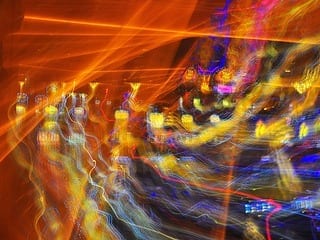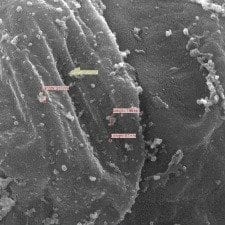
Introducing concept to undergrads could lead to more transparency in science
The ability to duplicate an experiment and its results is a central tenet of the scientific method, but recent research has shown an alarming number of peer-reviewed papers are irreproducible.
A team of math and statistics professors has proposed a way to address one root of that problem by teaching reproducibility to aspiring scientists, using software that makes the concept feel logical rather than cumbersome.
Researchers from Smith College, Duke University and Amherst College looked at how introductory statistics students responded to a curriculum modified to stress reproducibility. Their work is detailed in a paper published Feb. 25 in the journal Technological Innovations in Statistics Education.
In 2013, on the heels of several retraction scandals and studies showing reproducibility ratesas low as 10 percent for peer-reviewed articles, the prominent scientific journal Nature dedicated a special issue to the concerns over irreproducibility.
Nature’s editors announced measures to address the problem in its own pages, and encouraged the science community and funders to direct their attention to better training of young scientists.
“Too few biologists receive adequate training in statistics and other quantitative aspects of their subject,” the editors wrote. “Mentoring of young scientists on matters of rigour and transparency is inconsistent at best.”
The authors of the present study thus looked to their own classrooms for ways to incorporate the idea of reproducibility.
“Reproducing a scientific study usually has two components: reproducing the experiment, and reproducing the analysis,” said Ben Baumer, visiting assistant professor of math and statistics at Smith College. “As statistics instructors, we wanted to emphasize the latter to our students.”
The grade school maxim to “show your work” doesn’t hold in the average introductory statistics class, said Mine Cetinkaya-Rundel, assistant professor of the practice in the Duke statistics department. In a typical workflow, a college-level statistics student will perform data analysis in one software package, but transfer the results into something better suited to presentation, like Microsoft Word or Microsoft PowerPoint.
Though standard, this workflow divorces the raw data and analysis from the final results, making it difficult for students to retrace their steps. The process can give rise to errors, and in many cases, the authors write, “the copy-and-paste paradigm enables, and even encourages, selective reporting.”
“Usually, a data analysis report, even a published paper, isn’t going to include the code,” Cetinkaya-Rundel said. “But at the intro level, where this is the first time students are exposed to this workflow, it helps to keep intact both the final results and the code used to generate them.”
Enter R Markdown, a statistical package that integrates seamlessly with the programming language R. The team chose R Markdown for its ease of use — students wouldn’t have to learn a new computer syntax — and because it combines the raw data, computing and written analysis into one HTML document. The researchers hoped a single HTML file would give students a start-to-finish understanding of assignments, as well as make studying and grading easier.
The study introduced R Markdown to 417 introductory statistics students (272 from Duke University, 145 from Smith College) during the 2012-2013 school year. Instructors emphasized the lesson of reproducibility throughout each course and surveyed 70 students about their experience using R Markdown for homework assignments.
The Latest on: Scientific Reproducibility
[google_news title=”” keyword=”Scientific Reproducibility” num_posts=”10″ blurb_length=”0″ show_thumb=”left”]
via Google News
The Latest on: Scientific Reproducibility
- ZEISS and Argolight announce partnership to enhance microscopy imaging quality controlon April 24, 2024 at 6:01 pm
ZEISS and Argolight announced their strategic partnership. The collaboration aims to seamlessly integrate cutting-edge quality control solutions of the French company into the extensive line of ZEISS ...
- Thermo Fisher Scientific Inc TMOon April 23, 2024 at 4:00 pm
We sell different types of products and services to both investment professionals and individual investors. These products and services are usually sold through license agreements or subscriptions ...
- How To Improve the Reproducibility of Your Flow Chemistryon April 18, 2024 at 3:06 am
To enhance the reproducibility of flow chemistry scale-up - precise control of mixing and temperature in highly exothermic or rapid reactions in particular is essential. The expanding range of Glass ...
- FDA classifies recall of Boston Scientific device as 'most serious'on April 17, 2024 at 12:37 pm
April 17 (Reuters) - The U.S. Food and Drug Administration on Wednesday classified a recall of Boston Scientific's (BSX.N) , opens new tab device used to block blood flow during excessive bleeding ...
- Advanced Research Capabilities Elevate Biotechnology Sectoron April 17, 2024 at 10:24 am
Tucson, Arizona - Harnessing Advanced Research Capabilities with Umbrella Labs' SARMS and Peptides - An exciting development emerges in the world of scientific research with Umbrella Labs' ...
- Structure peer review to make it more robuston April 15, 2024 at 5:00 pm
Everyone who reviews a manuscript should answer a transparent set of questions, to ensure that scientific literature is subject to reliable quality control.
- Scientific Literacy and Inquiryon April 14, 2024 at 5:00 pm
An interdisciplinary sequence that promotes scientific literacy through a basic understanding of the sciences covered, along with an active exploration of how scientific discoveries are made, how they ...
- Opinion: Ancient superstitions about eclipses paved the way for this scientific truthon April 6, 2024 at 5:30 am
But the fact that most of us now understand that a sign in the sky as dramatic as an eclipse doesn’t dictate events on Earth is an important reminder of immutable scientific truths in an age of ...
- Open call for award: Establish a Reproducibility Network in your countryon April 2, 2024 at 4:59 pm
the TIER2 project has set out to investigate reproducibility challenges across scientific domains in order to enhance trust, integrity, and efficiency in research. Now, TIER2 is actively seeking ...
- SMLR Semler Scientific, Inc.on April 2, 2024 at 5:19 am
Semler Scientific, Inc. provides technology solutions to enhance the clinical effectiveness and efficiency of healthcare providers in the United States. The company’s products include QuantaFlo ...
via Bing News










